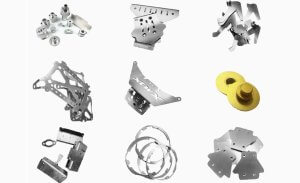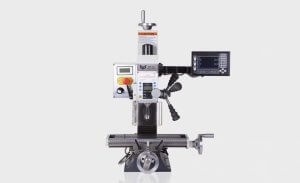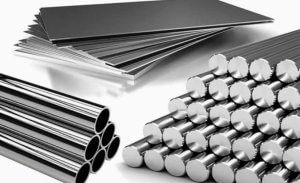Many metals naturally form a protective oxide film on their surfaces, a process known as passivation. Chemical conversion films take advantage of this by creating a stable compound layer on the metal surface through chemical or electrochemical means, effectively passivating the metal. These films can protect the metal from corrosion, improve the adhesion and durability of coatings, and impart other beneficial surface properties.
Types of Chemical Conversion Films
Chemical conversion films is a surface finishes method,it can be categorized based on the methods used to create them and their primary compositions. The main types include:
- Oxide Films: Created through the oxidation process.
- Phosphate Films: Formed using phosphoric acid.
- Chromate Films: Produced with chromic acid.
- Oxalate Films: Developed using oxalic acid.
Basic Uses of Chemical Conversion Films
Chemical conversion films serve multiple purposes across various industries:
- Rust Prevention: These films reduce the metal’s chemical activity, enhancing its thermodynamic stability in corrosive environments. They act as a barrier, preventing rust. Thin films are used for basic rust prevention, while thicker, more uniform films are required for higher protection levels.
- Wear Resistance: Commonly applied where metal-to-metal contact occurs, such as in moving parts. Phosphate films, for example, reduce friction and wear by forming a lubricating buffer layer.
- Coating Adhesion: These films can serve as a base layer for other coatings. They need to be dense, uniform, and appropriately thick to ensure good adhesion and durability of the top coatings.
- Galvanic Corrosion Prevention: In structures where different metals are in contact, chemical conversion films can prevent galvanic corrosion by increasing the contact resistance between the metals, thereby reducing the potential difference.
- Plastic Deformation Processing: Phosphate films are used in processes like cold drawing of steel wires and tubes, reducing drawing forces and extending die life.
- Insulation: Phosphate films are poor conductors of electricity, making them suitable as insulation layers on silicon steel plates.
- Decoration: Thanks to their ability to absorb dyes and their intrinsic aesthetic qualities, these films are used to enhance the appearance of everyday items.
Common Types of Chemical Conversion Films
1. Phosphate Films (Phosphating)
Phosphate films, commonly referred to as phosphating, are widely used in steel and iron treatment. The process, known as blackening, creates a porous crystalline structure. There are zinc phosphate and manganese phosphate films, formed through immersion or spraying methods.
| Purpose | Phosphate Film Type | Coating Treatment |
|---|---|---|
| Paint base layer | Thin/Medium zinc or manganese film | Paint |
| Product rust prevention | Thick zinc or manganese film | Rust-preventive oil |
| Process rust prevention | Thin zinc or manganese film | Lubricant |
| Wear reduction | Thick manganese film | Lubricant |
| Non-cutting cold deformation | Medium/Thick zinc film | Lubricant |
2. Oxide Films (Bluing)
Oxide films, also known as bluing, involve the formation of a magnetic oxide layer through the oxidation of steel. Bluing produces a thin layer (0.5-1.5 µm) with poor corrosion resistance but can be improved with oil, wax, or varnish.
| Oxidation Method | Sodium Hydroxide (g/L) | Sodium Nitrite | Temperature (°C) | Time (min) | Application Characteristics |
|---|---|---|---|---|---|
| Single-Tank Oxidation | 600-700 | 150-250 | 135-137 | 20-30 | Produces thin films suitable for indoor use |
| Dual-Tank Oxidation | 750-1000 | 150-250 | 143-145 | 30-45 | Produces thicker, more protective films |
3. Anodic Films
Anodic films, commonly used for aluminum and its alloys, are formed through electrolytic oxidation. These films, known as anodizing, can provide protection, decoration, electrical insulation, and resistance to contact corrosion.
| Solution Composition (g/L) | Oxidation Method | Current Density | Voltage (V) | Temperature (°C) | Time (min) | Process Characteristics |
|---|---|---|---|---|---|---|
| Sulfuric Acid | Sulfuric Acid Method | AC | 1.5-2.0 | 18-28 | 10-30 | Forms colorless, porous films that can be dyed |
| Chromic Acid | Chromic Acid Method | DC | 0.8-2.5 | 14-24 | 20-45 | Forms dense, smooth, gray films |
| Oxalic Acid | Oxalic Acid Method | DC | 0.5-0.8 | 0-40 | 90-150 | Forms hard, decorative films |
Chemical conversion films play a crucial role in enhancing the durability and functionality of CNC machined parts. By leveraging different types of films and application techniques, manufacturers can significantly improve the performance and longevity of their products.
Other Articles You Might Enjoy
- Precision CNC Machining of Steel: High-Volume Production
Precision CNC Machining and High-Volume Production As an integral part of modern manufacturing processes, Precision Computer Numerical Control (CNC) machining brings about unmatched accuracy and consistency in the production of…
- Material Versatility in CNC Machining: From Titanium to Thermoplastics
Introduction to CNC Machining CNC machining stands as a cornerstone in the manufacturing sector, enabling the precise creation of parts and components. This process utilizes computer numerical control (CNC) to…
- Precision CNC Machining for High-Performance Industrial Machinery
Precision CNC Machining for High-Performance Industrial Machinery The process of Precision CNC (Computer Numerical Control) machining is at the core of manufacturing high-performance industrial machinery. This technique leverages a computer's…
- Nickel vs. Cobalt Alloys in High-Temperature CNC Machining: A Detailed Analysis?
Nickel and Cobalt Alloys in High-Temperature CNC Machining Both Nickel and Cobalt alloys play an essential role in high-temperature CNC machining. These metal alloys are popular choices due to their…
- CNC Machining for Medical Applications: Compliance and Material Selection?
Introduction to CNC Machining in Medical Applications CNC or Computer Numerical Control machining is a manufacturing process wherein pre-programmed computer software dictates the movement of factory tools and machinery. This…
- Unraveling Bead Blasting Process in CNC Machining(cnc machining china Sid)
Bead blasting is a significant process within the realm of Computer Numerical Control (CNC) machining, providing numerous industries with quality finishes for various types of products. From aircraft parts to…








